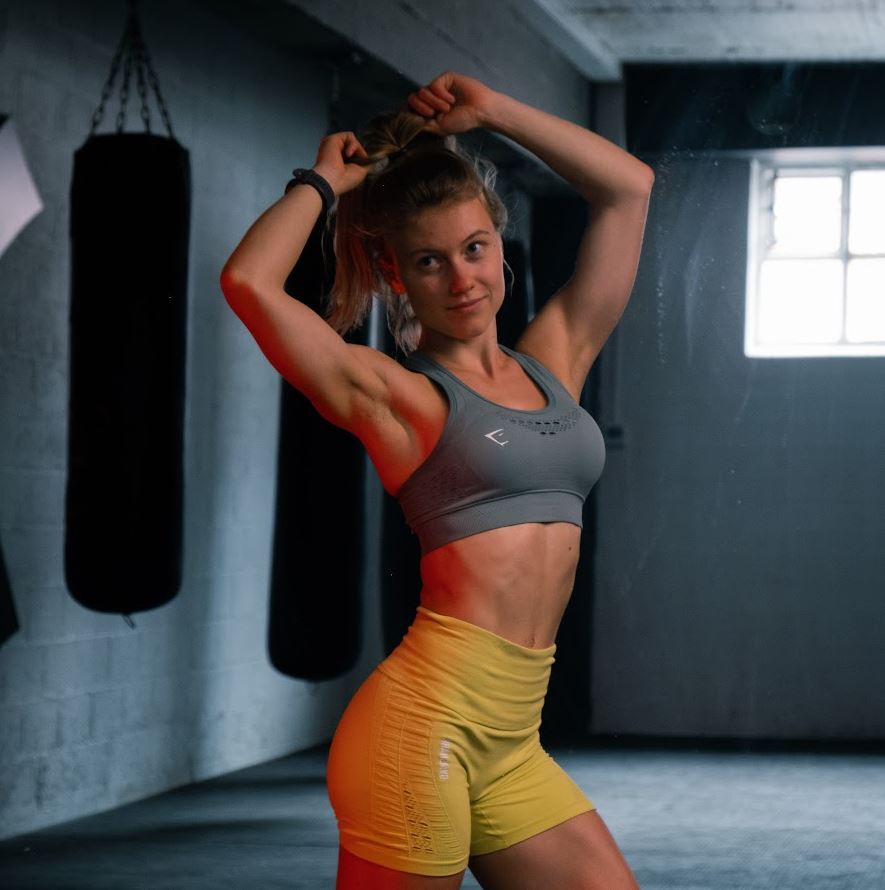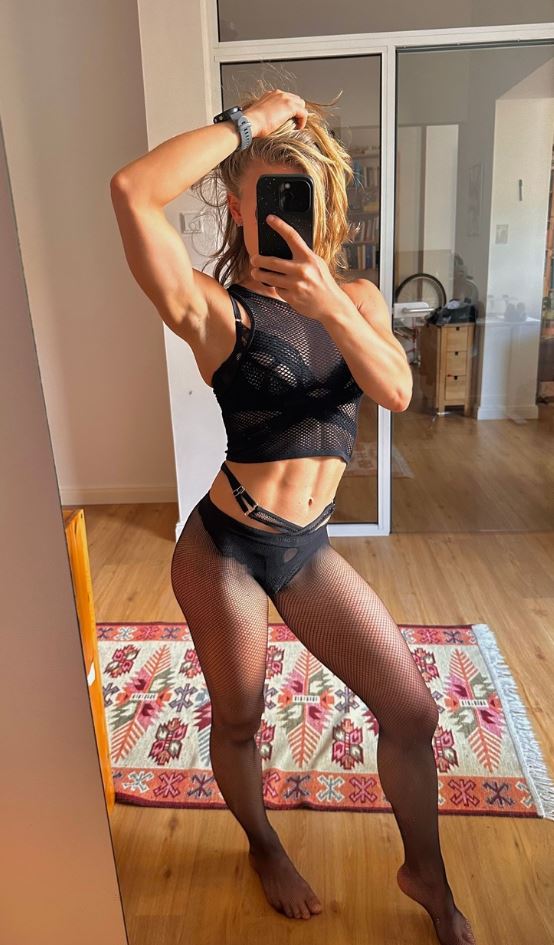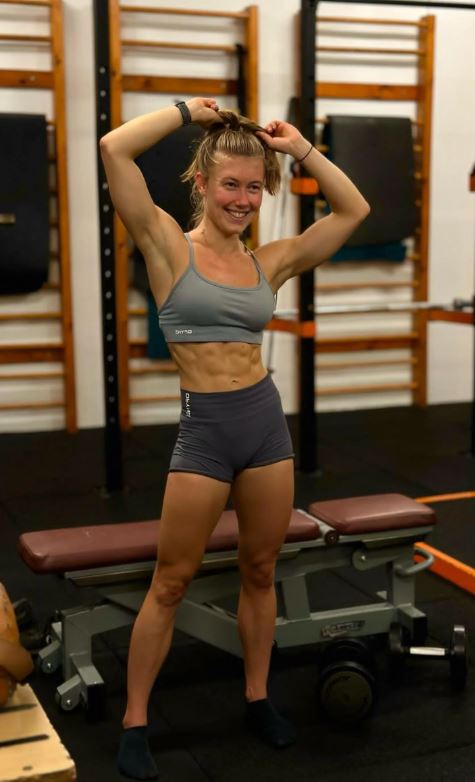Sadie Mckenna Nude Unveiling The Allure Of Art And The Impact On Artistic Expression
Sadie McKenna is a name that has sparked discussions in the world of art, particularly in the realm of nude modeling and its impact on artistic expression. As a subject of various artistic works, her presence challenges traditional boundaries and prompts a deeper exploration of the intersection between art, identity, and societal norms. Nude modeling has a long and complex history, often associated with both admiration and controversy. For centuries, the human form has been a central theme in art, serving as a vessel for emotional, philosophical, and aesthetic exploration.
This article seeks to uncover the artistic significance of Sadie McKenna’s work and the broader implications of nude art. Through her contributions, McKenna has inspired discussions on body positivity, the perception of nudity in modern media, and the evolving role of the nude in contemporary artistic movements. By examining her influence, as well as historical and theoretical perspectives on nude art, we can better understand how artistic representation continues to shape public discourse.
Nude art has always been a reflection of cultural attitudes towards the human body. While some view it as a celebration of beauty and form, others see it as a contentious subject that challenges societal boundaries. McKenna’s work has been instrumental in pushing these boundaries further, redefining the role of nude modeling in a modern context. Whether through traditional paintings, photography, or digital mediums, her presence in artistic spaces serves as a testament to the enduring power of the nude form.
This discussion will delve into key themes surrounding McKenna’s work, including the history of nude art, feminist interpretations, and the impact of the male gaze. By understanding these elements, we gain insight into the broader artistic and cultural implications of her contributions. As the world of art continues to evolve, figures like Sadie McKenna play a crucial role in shaping the dialogue around nudity, representation, and artistic freedom. Her work invites us to question preconceived notions and engage in a more nuanced appreciation of the artistic expression of the human body.
Through this exploration, we will uncover not only the allure of nude art but also the challenges and opportunities it presents for artists and audiences alike. McKenna’s role in this ongoing conversation highlights the transformative power of art and its ability to provoke thought, inspire change, and redefine the way we perceive the human form.
The Art of Nude Modeling: A Journey of Self-Discovery and Empowerment
Nude modeling has long been regarded as both an art form and a personal journey. For many models, it represents a profound experience of self-discovery and empowerment. Sadie McKenna is one such figure whose work in nude art has redefined perceptions of beauty, confidence, and artistic representation. Her journey into nude modeling was not merely an act of posing for artists but an exploration of identity and self-expression.
The act of modeling in the nude requires a deep level of confidence and an understanding of one’s own body. It is an art form that goes beyond mere exposure, transforming into a powerful statement about vulnerability, strength, and authenticity. McKenna’s participation in this art form challenges conventional beauty standards and encourages a broader acceptance of diverse body types. In an era where body image issues are rampant, her work serves as an inspiring reminder that beauty is not confined to societal expectations.
Throughout history, nude modeling has played a significant role in art. From classical sculptures to Renaissance paintings, artists have used the nude form to explore themes of humanity, emotion, and the natural world. However, the perception of nude modeling has shifted over time, often facing criticism and moral debates. In contemporary society, it remains a topic of discussion, balancing between artistic appreciation and societal discomfort.
McKenna’s role as a nude model extends beyond being a subject for artists—she is an advocate for body positivity and artistic freedom. Her work challenges the notion that nudity is inherently sexualized or inappropriate. Instead, it emphasizes the importance of self-acceptance and the power of artistic representation. By embracing her role in nude modeling, she opens doors for others to see their bodies as something worthy of artistic celebration rather than shame.
Furthermore, her presence in the art world highlights the evolving conversation around consent and representation. Unlike past generations where models may not have had control over their portrayal, McKenna’s approach involves actively shaping the narrative of her own image. This shift empowers models to reclaim their agency in artistic spaces, ensuring that their participation is a collaborative effort rather than passive objectification.
Ultimately, nude modeling, when approached with artistic integrity and respect, serves as a powerful tool for self-expression. Sadie McKenna’s work exemplifies the courage it takes to challenge societal norms and redefine beauty on her own terms. By embracing the nude form as an art medium, she continues to inspire artists and audiences to see beyond the surface, appreciating the depth and meaning that lies within artistic expression.
Sadie McKenna’s Impact on the Art Community: A Muse for Artists and a Catalyst for Change
Sadie McKenna’s presence in the art world extends far beyond being a model—she has become a muse for artists and a catalyst for discussions surrounding artistic expression. Her impact on the art community can be seen in the numerous works inspired by her, the conversations she has sparked, and the way she has challenged traditional notions of beauty and nudity in art.
As a muse, McKenna has worked with various artists, from painters to photographers, who have sought to capture the essence of her presence. Her ability to convey emotion, vulnerability, and strength through her poses has led to the creation of striking and thought-provoking pieces. These works not only showcase her physical form but also tell deeper stories about identity, self-acceptance, and human connection.
McKenna’s contributions to the art community go beyond the creation of individual artworks. She has actively participated in discussions and movements that promote body positivity and challenge the stigma associated with nudity in art. By embracing her role as a nude model, she has helped shift perspectives, encouraging people to view the human form as a subject of artistic exploration rather than something to be censored or objectified.
One of the most significant aspects of McKenna’s influence is her role in redefining the relationship between the artist and the model. Traditionally, nude models have been seen as passive subjects, existing solely for the artist’s vision. However, McKenna has helped change this dynamic by asserting her agency and ensuring that her participation in art is a collaborative process. This shift allows for a more respectful and ethical approach to nude art, where models are recognized as active contributors rather than just muses.
Her impact also extends into the digital realm, where she has used social media and other platforms to challenge stereotypes about nude modeling. By sharing her experiences and insights, she has helped normalize artistic nudity and educate audiences about its significance. In doing so, she has contributed to a broader movement that seeks to destigmatize the nude form and celebrate its artistic value.
In essence, Sadie McKenna’s work in the art community is transformative. She has not only inspired countless artists but has also played a crucial role in changing how society perceives nude art. Through her contributions, she continues to push the boundaries of artistic expression, encouraging a more open and accepting approach to the portrayal of the human body in art.
The Historical Significance of the Nude in Art
The nude has been a central subject in art for thousands of years, serving as a reflection of cultural values, philosophical beliefs, and aesthetic ideals. From the statues of ancient Greece to the paintings of the Renaissance and the modern interpretations of today, the depiction of the human form has evolved alongside society itself. Understanding the historical significance of the nude in art provides context for figures like Sadie McKenna, whose work continues a long tradition of using the human body as a medium of artistic expression.
In ancient civilizations, the nude was often associated with divinity, heroism, and physical perfection. Greek and Roman sculptures idealized the human form, depicting gods, athletes, and warriors with a sense of balance and proportion. These representations emphasized both the physical and intellectual virtues of humanity, showcasing the body as a symbol of power and grace. However, as societal attitudes shifted, so did the perception of nudity in art.
During the Middle Ages, nudity became a more controversial subject due to religious influences. The human body, once celebrated in classical art, was now seen as something to be covered and controlled. Many works of this period focused on spiritual themes, often depicting clothed figures rather than nude ones. However, with the Renaissance came a revival of classical ideals, and artists such as Michelangelo and Leonardo da Vinci reintroduced the nude form as a subject of artistic study and admiration.
In the 19th and 20th centuries, artists began challenging traditional representations of the nude. Movements such as Impressionism, Modernism, and Surrealism pushed the boundaries of artistic expression, redefining how the human body was portrayed. The nude was no longer limited to idealized forms; instead, it became a means of exploring emotion, identity, and personal experience. This shift paved the way for contemporary artists and models like Sadie McKenna, who use nudity as a tool for self-expression and social commentary.
Today, the nude in art remains a complex and evolving subject. While it continues to be celebrated as a form of artistic beauty, it also sparks debates about censorship, body autonomy, and representation. McKenna’s work contributes to this ongoing dialogue, challenging outdated perceptions and reinforcing the idea that the human form is a powerful and legitimate medium for artistic expression.
Feminist Perspectives on the Nude and Artistic Expression
Feminism has played a crucial role in reshaping how the nude is perceived in art, challenging traditional representations and advocating for a more diverse and empowering portrayal of the human body. Historically, the female nude was often depicted from a male perspective, reinforcing ideas of objectification and passive beauty. However, feminist artists and theorists have worked to reclaim the nude, transforming it into a tool for self-expression and social critique.
One of the key feminist critiques of the traditional nude is that it has largely been created for the male gaze, meaning that women in art have often been portrayed in ways that prioritize male pleasure rather than female autonomy. Artworks from the past frequently depicted women as passive, seductive, or submissive, reinforcing gender stereotypes and limiting the role of women in artistic narratives. Feminist artists, however, have sought to subvert these norms by portraying the female nude from a perspective of empowerment rather than objectification.
Artists such as Judy Chicago, Hannah Wilke, and Cindy Sherman have challenged traditional representations of the nude by incorporating themes of self-representation, agency, and body politics into their work. These artists emphasize that the nude should not be confined to an external gaze but should instead serve as a platform for women to explore their own identities and challenge societal norms.

Sadie McKenna’s work aligns with these feminist ideals, as she uses her presence in art to promote body positivity and challenge the idea that nudity is inherently sexual or shameful. By actively participating in her own representation, she reclaims control over her image, ensuring that her work is a reflection of her own identity rather than a product of societal expectations.
Additionally, feminist perspectives on nude art highlight the importance of diverse representation. Traditional depictions of the nude often adhered to narrow beauty standards, excluding bodies that did not fit into conventional ideals. Today, feminist artists and models strive to include a broader range of body types, skin tones, and experiences, reinforcing the idea that all bodies are worthy of artistic representation.
Ultimately, the feminist approach to nude art seeks to challenge outdated norms and create space for new voices and perspectives. McKenna’s contributions to this movement reflect a broader shift in the art world—one that prioritizes autonomy, diversity, and the celebration of the human form on its own terms.
The Male Gaze and Its Influence on Artistic Representation
The concept of the “male gaze” has been a central topic in discussions about artistic representation, particularly when it comes to the nude. Coined by film theorist Laura Mulvey, the term describes the way women in art, film, and media have often been portrayed through a lens that prioritizes male desire and perception. Understanding how the male gaze has shaped artistic depictions of the nude provides important insight into the ongoing conversations about agency, representation, and artistic expression.
Historically, the majority of nude artworks have been created by male artists for a male audience. This has led to a recurring theme in which the female body is positioned as an object of beauty and desire, rather than as a subject with agency. In classical paintings, for example, women are often depicted reclining, partially undressed, and looking away from the viewer, suggesting passivity and availability. This type of imagery reinforces the idea that women exist to be seen rather than to express themselves.
The male gaze is not limited to historical artworks—it continues to influence modern photography, advertising, and digital media. Even today, images of the nude are often shaped by commercial and social standards that dictate how bodies should look and be presented. This narrow perspective limits artistic diversity and often marginalizes those who do not fit conventional beauty ideals.
However, contemporary artists and models have increasingly worked to challenge and subvert the male gaze. Figures like Sadie McKenna have helped redefine how the nude is portrayed by embracing self-representation and creative autonomy. Rather than being a passive subject, she actively participates in shaping the narrative around her image, ensuring that her work reflects her own artistic vision rather than external expectations.
By recognizing the influence of the male gaze, the art world can move towards more inclusive and authentic representations of the human body. This shift not only benefits models and artists but also enriches artistic expression as a whole, allowing for a broader and more meaningful exploration of identity, emotion, and form.
Sadie McKenna’s work in the realm of nude art is a testament to the evolving nature of artistic expression and the ongoing dialogue surrounding representation, beauty, and empowerment. Through her modeling and advocacy, she challenges outdated notions of nudity, encouraging audiences to see the human body as a legitimate and powerful medium of art rather than something to be censored or objectified.
The history of the nude in art reveals that this subject has always been intertwined with cultural values, artistic movements, and philosophical debates. While past representations often reflected idealized or restrictive views of the body, contemporary artists and models are redefining the nude in ways that prioritize agency, authenticity, and inclusivity. McKenna’s contributions are part of this broader shift, reinforcing the idea that art should be a space for exploration and self-expression rather than conformity to societal norms.
By examining feminist perspectives and the impact of the male gaze, it becomes clear that artistic representation is not just about aesthetics—it is also about power, perception, and identity. McKenna’s work highlights the importance of reclaiming the narrative around the nude, ensuring that artistic expression is a space where individuals can celebrate their own bodies without fear of judgment or exploitation.
As the art world continues to evolve, figures like Sadie McKenna play a crucial role in shaping the conversation around the nude and its place in modern culture. Her influence extends beyond individual artworks, inspiring a new generation of artists and audiences to engage with the human form in a way that is thoughtful, respectful, and deeply meaningful.
EN -The Rise Of Desi Viral Mms Videos Capturing Cultural Conversations
The Narrative Of Imsha Rehman The Magic Of Viral Videos
Robert Dwyer Video Finding The Strength In Visual Storytelling
The Rise Of The Funky Town Video A Cultural Phenomenon
Unpacking The Viral Sensation Miss Kittys Journey And Her Impact On Social Media
The Heartwarming Story Behind Terlanjur Indah A Glimpse Into Lifes Beauty
Melissa Mercado Video Leaked Poldance



 | Sitemap | Mail
| Sitemap | Mail